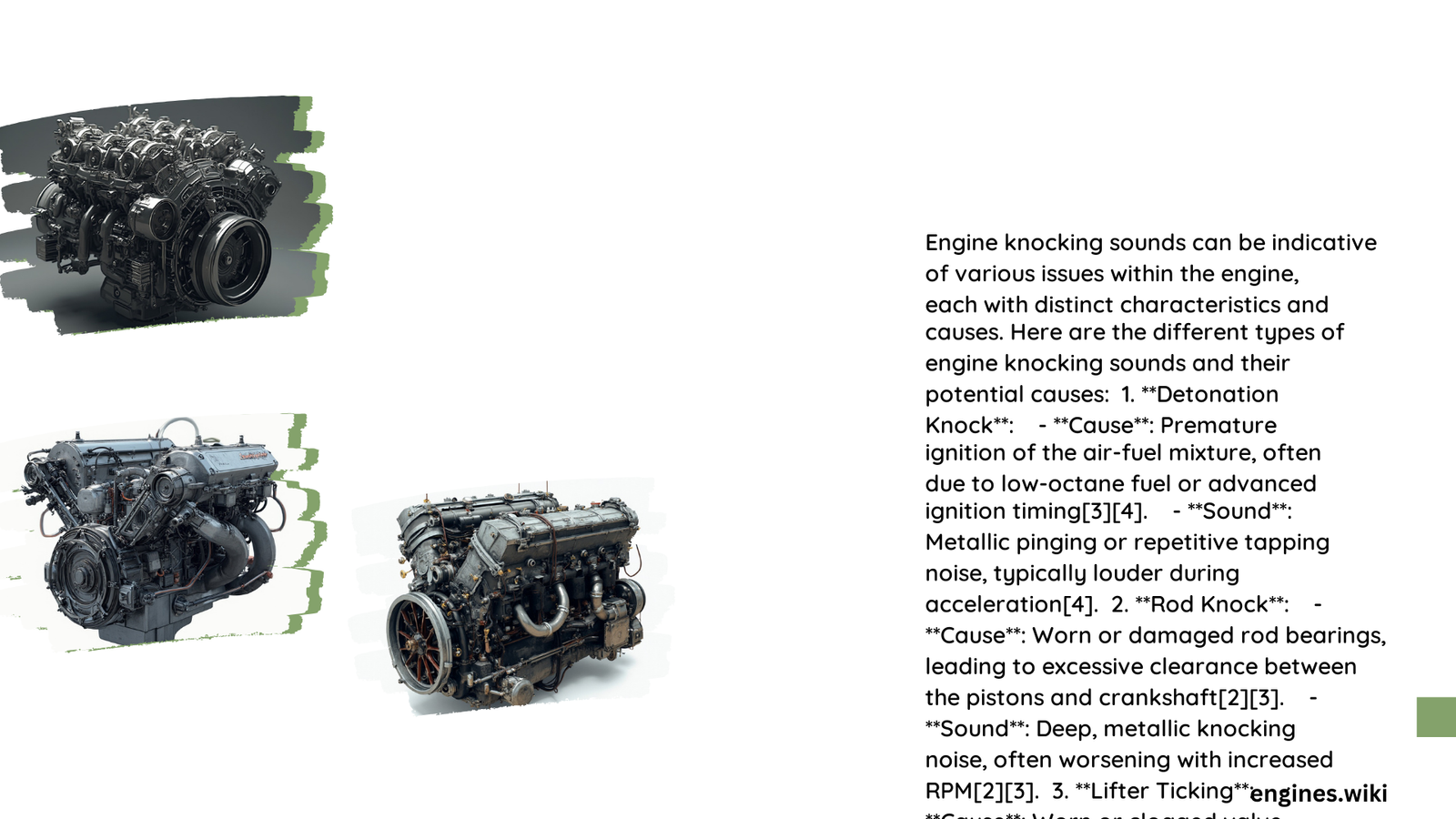Engine knocking sounds represent complex acoustic signatures that can indicate various mechanical issues within a vehicle’s powertrain. These distinctive noises range from subtle metallic pings to aggressive hammering sounds, each signaling potential problems like improper combustion, mechanical wear, or structural stress that demand immediate professional attention and precise diagnostic intervention.
What Are the Primary Categories of Engine Knock?
How Do Pre-Ignition Knocks Manifest?
Pre-ignition knocks occur when fuel-air mixtures spontaneously combust before the spark plug’s scheduled firing. These sounds typically exhibit:
- Frequency Range: 5-7 kHz
- Characteristics:
- Sharp, metallic ping
- Rapid, high-pitched resonance
- Intermittent occurrence during acceleration
What Defines Detonation Knock Characteristics?
Detonation knocks represent the most common engine noise anomaly, characterized by:
| Knock Type | Frequency | Sound Description | Potential Causes |
|---|---|---|---|
| Mild Detonation | 5-6 kHz | Subtle metallic tapping | Low-grade fuel |
| Severe Detonation | 6-7 kHz | Aggressive hammering | Advanced ignition timing |
How Can Mechanics Diagnose Knock Sounds?

What Tools Enable Precise Knock Detection?
Effective knock diagnosis requires specialized equipment:
- Acoustic Stethoscope
- Pinpoints exact sound origin
- Allows direct engine component listening
-
Minimal technical complexity
-
Vibration Analyzer
- Captures frequency spectrum
- Provides quantitative sound measurements
-
Enables detailed mechanical assessment
-
Oscilloscope
- Visualizes electrical signal variations
- Helps correlate knock sensor data
- Advanced diagnostic capability
What Are Common Knock Sound Triggers?
Fuel-Related Factors
Improper fuel selection dramatically influences knock occurrence:
- Octane Rating Mismatch
- Using lower-grade fuel than recommended
- Increases combustion chamber temperature
-
Promotes premature ignition
-
Fuel Quality Variations
- Contaminated fuel sources
- Inconsistent fuel composition
- Reduced combustion stability
Mechanical Wear Indicators
Structural degradation contributes to distinctive knock sounds:
- Worn piston rings
- Damaged connecting rod bearings
- Cylinder wall scoring
- Excessive carbon buildup
How Should Owners Respond to Knock Sounds?
Immediate Action Steps
- Stop Driving
- Prevent potential catastrophic engine damage
-
Assess sound characteristics
-
Document Sound
- Record audio sample
- Note driving conditions
-
Track frequency and intensity
-
Professional Evaluation
- Consult certified mechanic
- Perform comprehensive diagnostic scan
- Determine precise repair strategy
Technical Insights for Advanced Understanding
Frequency Analysis Techniques
Sophisticated knock detection involves:
- Fast Fourier Transform (FFT) analysis
- Harmonic frequency examination
- Spectral signature comparison
Predictive Maintenance Strategies
Proactive approaches minimize knock-related risks:
- Regular fuel system cleaning
- Consistent oil maintenance
- Timely spark plug replacement
- Periodic compression testing
Conclusion
Understanding different engine knocking sounds requires technical expertise, systematic diagnostic approach, and comprehensive mechanical knowledge. Vehicle owners and mechanics must remain vigilant, interpreting acoustic signals as critical communication from the powertrain.
